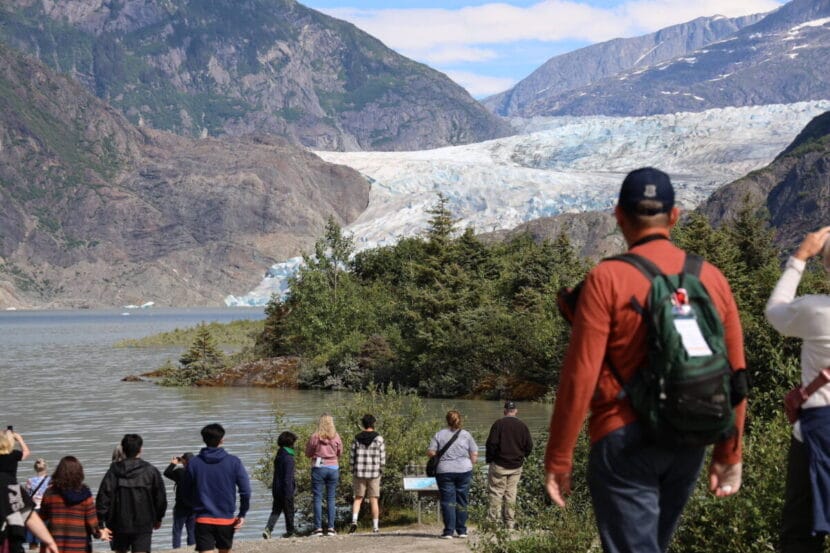This summer, there will be a new type of guide at the Mendenhall Glacier, one whose job it is to educate visitors about how Lingít history is intertwined with the glacierʼs.
The role is part of the new co-management strategy between the U.S. Forest Service and the Central Council of the Tlingit and Haida Indian Tribes of Alaska.
Tlingit and Haida President Chalyee Éesh Richard Peterson says that, in the past, staff at the glacier wouldnʼt know what to say when visitors asked them about the Indigenous history of the area.
“The feds at the time out there at Mendenhall said ʼWell, they didnʼt have anything to do with glaciers.ʼ And that was kind of dumbfounding to us,” he said. “Iʼm Kaagwaantaan, we have migration stories about the glacier. I think everyone does. We have songs and stories about the glacier.”
Now, Peterson said, this position will allow for the hundreds of thousands of annual visitors to the glacier to understand the history and original language of the area more deeply.
“I think if you want them to have an authentic experience — a more inclusive experience — then the voice of our people need to be out there in that representation, and so weʼre moving towards more opportunities for co-stewardship and make sure that our voices are represented out there.”
Itʼs not just for the benefit of tourists, he said. Roles like these reinforce the Lingít communityʼs place on the land and in its caretaking.
“That weʼre still here and that our language should be valued and our placenames should be valued, and as all people, we should be valued,” Peterson said.
The Tribe plans to hire up to four people for the job. It’s a seasonal position, from March to September, with a training period before the cruise ships start arriving. Ambassadors will be paid $20 an hour.






